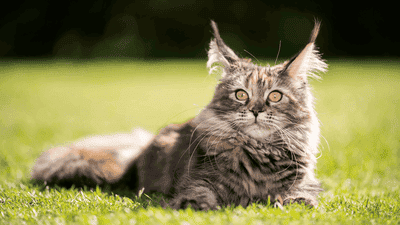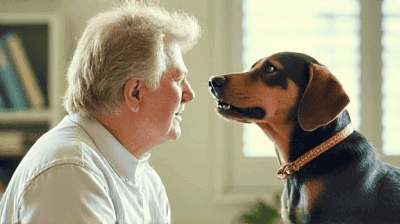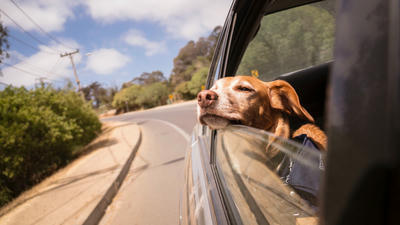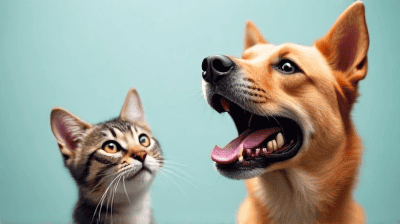How to Capture Emotions in Pet Photography: Telling a Story Through Your Images

Pet photography is more than just capturing a cute face or a playful moment—it’s about telling a story that resonates with viewers on an emotional level. Pets, like humans, experience a wide range of emotions—joy, curiosity, contentment, and even vulnerability. As a pet photographer, your goal is to capture these emotions in a way that tells a story and connects with the audience.
The Power of Emotion in Pet Photography
Emotion is the heart of storytelling in photography. It’s what transforms a simple snapshot into a powerful image that resonates with viewers. In pet photography, capturing emotions allows you to showcase the personality, character, and unique bond between pets and their owners. Here’s why emotion is so important in pet photography.
1. Creating a Connection
Emotional photos create a connection between the viewer and the subject. When you capture the joy in a dog’s eyes or the calm contentment of a cat lounging in the sun, you invite the viewer to share in that moment and feel the emotion themselves. This connection is what makes pet photography so impactful.
2. Showcasing Personality
Every pet has a unique personality, and capturing their emotions is a way to showcase that personality. Whether your pet is playful, curious, shy, or affectionate, their emotions reveal who they are and what makes them special. By focusing on these moments, you can create images that are deeply personal and meaningful.
3. Preserving Memories
Emotional photos are a way to preserve the memories of your pet’s life. They capture the fleeting moments of joy, love, and companionship that define your relationship with your pet. These images become cherished keepsakes that remind you of the bond you share and the emotions you’ve experienced together.
Understanding Pet Emotions

Before you can capture emotions in your pet photography, it’s important to understand how pets express their feelings. While pets can’t speak, they communicate through body language, facial expressions, and behavior. Here’s a breakdown of common pet emotions and how to recognize them.
1. Happiness and Playfulness
Happy pets are easy to spot—they wag their tails, jump around, and have a relaxed, open expression. Playful pets may pounce, chase, or engage in games with their owners. These moments are perfect for capturing the joy and energy of your pet.
Key Tip: Use a fast shutter speed to freeze the action and capture the excitement in your pet’s eyes and movements.
2. Curiosity
Curious pets tilt their heads, perk up their ears, and focus intently on something that has caught their attention. These moments are great for capturing your pet’s inquisitive nature and the sense of wonder they bring to everyday life.
Key Tip: Use a shallow depth of field to focus on your pet’s eyes and create a sense of depth and mystery in the image.
3. Contentment
Content pets are relaxed and at ease—they may curl up in a favorite spot, close their eyes, or purr softly. These moments are ideal for capturing the calm, serene side of your pet’s personality.
Key Tip: Use soft, diffused lighting to create a warm, cozy atmosphere that enhances the feeling of contentment.
4. Vulnerability
Pets, like humans, can experience moments of vulnerability—whether they’re feeling shy, scared, or simply tired. These moments can create powerful, emotional images that highlight the tender, delicate side of your pet.
Key Tip: Approach your pet gently and use a quiet, soothing voice to help them feel safe and relaxed. Use a soft focus to create a dreamy, introspective look.
5. Affection
Affectionate pets show their love through physical contact—they may nuzzle, lick, or lean against their owner. These moments are perfect for capturing the bond between pets and their humans.
Key Tip: Focus on the interaction between your pet and their owner, and capture the small gestures of affection that define the relationship.
Tips for Capturing Emotions in Pet Photography
Now that you understand how pets express their emotions, let’s dive into the techniques and tips that will help you capture these moments in your photos. From lighting to composition, these strategies will ensure that your images convey the emotion and tell a story.
1. Focus on the Eyes
The eyes are the window to the soul, and this is especially true in pet photography. A pet’s eyes can convey a wide range of emotions—joy, curiosity, contentment, and even vulnerability. By focusing on the eyes, you can create images that are deeply emotional and engaging.
Key Tip: Use a wide aperture (low f-stop number) to create a shallow depth of field, keeping the eyes sharp while blurring the background. This draws the viewer’s attention to the emotion in your pet’s eyes.
2. Use Natural Light
Natural light is ideal for capturing emotions in pet photography, as it creates a soft, flattering effect that highlights your pet’s features. Shoot outdoors during the golden hour (shortly after sunrise or before sunset) or near a window for the best results.
Key Tip: Avoid harsh, direct sunlight, as it can create unflattering shadows and cause your pet to squint. Instead, look for diffused light that gently illuminates your pet’s face and eyes.
3. Capture Candid Moments
Candid moments often capture the most authentic expressions of emotion. Instead of posing your pet, let them be themselves and capture the moments as they unfold. Whether it’s a playful game, a quiet nap, or a curious exploration, these candid shots can be incredibly meaningful.
Key Tip: Use a telephoto lens to capture candid moments from a distance without disturbing your pet. This allows them to relax and behave naturally.
4. Include the Environment
The environment can add context and depth to your photos, helping to tell a story and convey emotion. Whether it’s a favorite park, a cozy home setting, or a place where your pet feels safe, the surroundings can enhance the emotional impact of the image.
Key Tip: Use a wide-angle lens to capture both your pet and their environment in the frame. Be mindful of the composition to ensure your pet remains the focal point.
5. Use Props and Toys
Props and toys can help evoke specific emotions in your pet, making it easier to capture those moments on camera. For example, a favorite toy can bring out your pet’s playful side, while a soft blanket can create a sense of comfort and relaxation.
Key Tip: Choose props that match the mood and emotion you want to convey. Avoid overly busy or distracting elements that could take the focus away from your pet.
6. Pay Attention to Body Language
A pet’s body language can reveal a lot about their emotions. For example, a wagging tail, perked ears, or a relaxed posture can indicate happiness, while a tucked tail or flattened ears may signal fear or anxiety. By paying attention to these subtle cues, you can capture the emotion in your pet’s body language.
Key Tip: Take the time to observe your pet and learn their unique body language. This will help you anticipate their emotions and capture the perfect moment.
7. Experiment with Angles
Different angles can convey different emotions in your photos. For example, a low-angle shot can make your pet appear larger than life, emphasizing their strength and energy. A high-angle shot, on the other hand, can create a sense of vulnerability or innocence.
Key Tip: Use a tripod to stabilize your camera and experiment with different angles without losing focus. This allows you to explore creative perspectives and capture unique emotional moments.
8. Be Patient and Present
Capturing emotions in pet photography requires patience and presence. Pets, like humans, need time to feel comfortable and express their emotions. Spend time with your pet, observe their behavior, and be ready to capture those fleeting moments of emotion when they arise.
Key Tip: Avoid rushing or forcing your pet into a specific pose. Let them be themselves, and be patient as you wait for those authentic emotional moments to emerge.
Post-Processing Tips for Enhancing Emotions

Post-processing is an essential part of the photography process, and it can be used to enhance the emotional impact of your images. Here are some tips for editing your pet photos to make the most of the emotion.
1. Adjust the Exposure
If the image appears too dark or too bright, adjust the exposure in your editing software. Use a selective adjustment tool to brighten the eyes slightly, making sure not to overdo it and lose detail.
2. Enhance the Contrast
Increasing the contrast can make the emotion in your pet’s eyes and facial features stand out. Use a contrast slider or a clarity tool to bring out the details in the iris and pupil.
3. Sharpen the Eyes
Sharpening the eyes can make them appear crisper and more expressive. Use a sharpening tool with a small radius to avoid creating unnatural artifacts.
4. Add a Vignette
A subtle vignette can draw attention to your pet by darkening the edges of the frame. This technique works particularly well for emotional portraits, as it guides the viewer’s gaze toward the subject’s eyes and expression.
5. Convert to Black and White
Black and white photography is a powerful way to emphasize the emotion in your images. By removing color from the equation, you can focus on the contrast, texture, and expression in your pet’s face.
Key Tip: When converting to black and white, pay attention to the lighting and shadows. Strong contrasts can add drama and intensity to the emotion in the image.
Creative Ideas for Emotional Pet Photography
Looking for inspiration? Here are some creative ideas to help you capture emotions in your pet photography.
1. The Classic Portrait
A simple, classic portrait can be incredibly emotional when it focuses on your pet’s eyes and expression. Use soft lighting and a neutral background to create a clean, elegant look that draws attention to your pet’s emotions.
2. The Playful Shot
Capture the joy and energy of your pet’s playful moments with an action shot. Whether it’s a dog jumping for a ball or a cat chasing a toy, these moments are perfect for showcasing your pet’s happiness.
Key Tip: Use a fast shutter speed to freeze the action and keep the image sharp.
3. The Quiet Moment
Not all emotional photos need to be action-packed. Capture a quiet, intimate moment between your pet and their owner, such as a cuddle on the couch or a nap in the sun. These photos can be incredibly touching and evoke a sense of calm and contentment.
4. The Adventure Shot
If your pet enjoys outdoor adventures, capture them in their element. Whether it’s a hike, a trip to the beach, or a walk in the woods, these photos can tell a story about your pet’s sense of curiosity and exploration.
Key Tip: Use a wide-angle lens to capture both your pet and the environment in the frame.
5. The Black and White Portrait
Black and white photography is a powerful way to emphasize the emotion in your pet’s eyes and expression. It creates a timeless, artistic look that highlights the contrast and texture in your pet’s face.
Key Tip: Focus on the lighting and shadows to create a dramatic, emotional image.
Conclusion

Capturing emotions in pet photography is about more than just taking a photograph—it’s about telling a story that resonates with viewers on an emotional level. By focusing on your pet’s eyes, using natural light, and capturing candid moments, you can create images that convey the joy, curiosity, contentment, and vulnerability of your pet.
Remember, the key to successful pet photography is patience, observation, and a willingness to let your pet be themselves. Whether you’re capturing a playful puppy, a serene senior cat, or a curious parrot, the emotions you capture will create images that are not only beautiful but also deeply meaningful.
So grab your camera, spend some quality time with your pet, and start capturing the emotional moments that tell their unique story.








